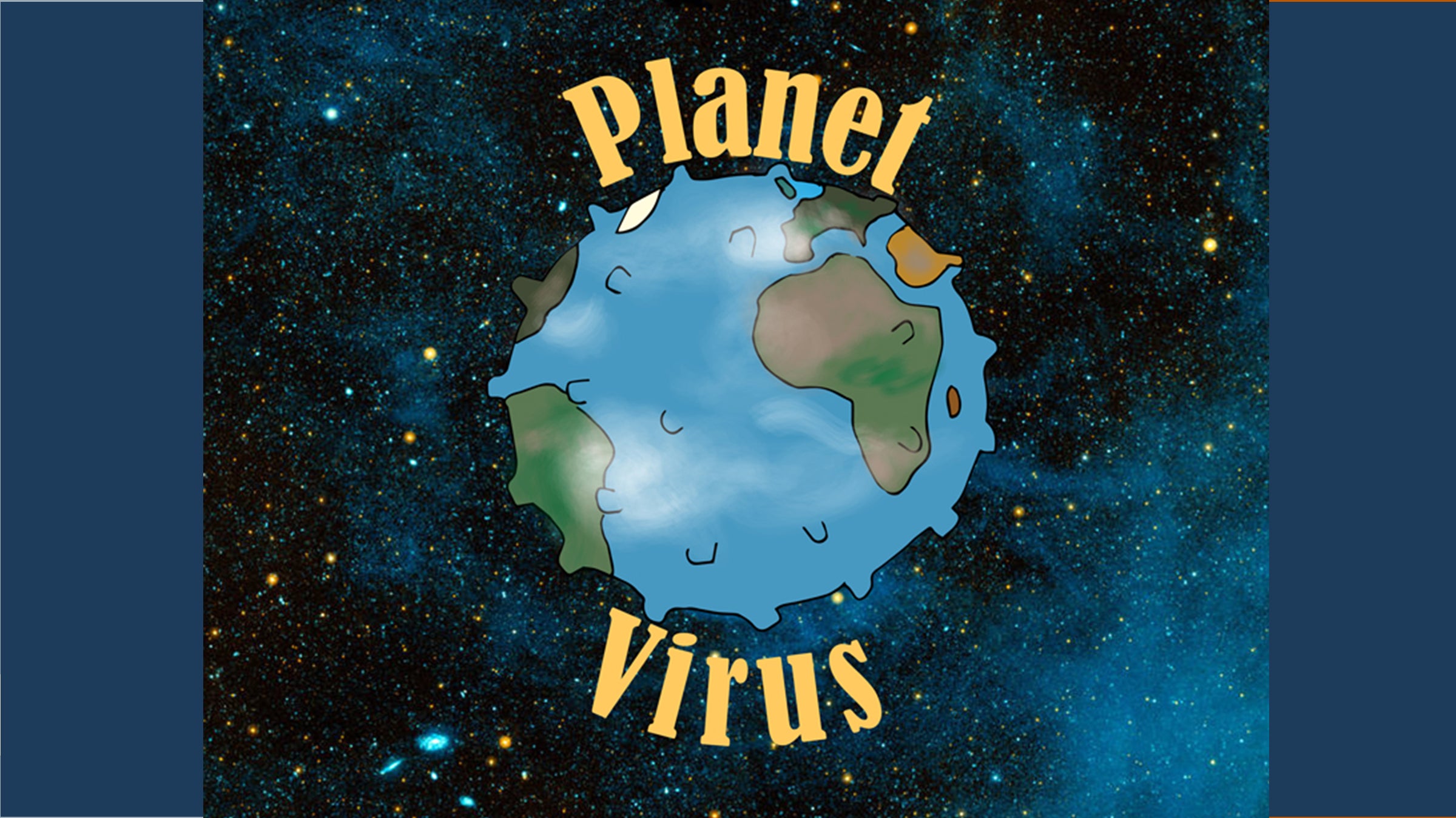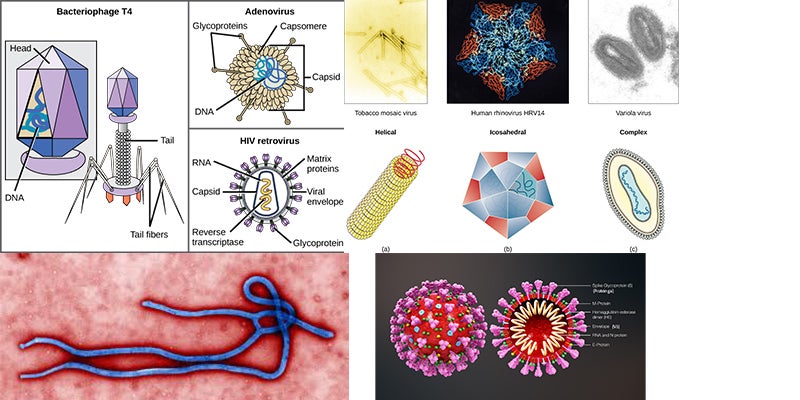
Illustration: Nicole Elmer
Viruses are tiny but their impact on life is huge. This is true not just for people, but for all life forms on earth. Some researchers believe that viruses might just be the most successful of earth’s inhabitants. But why might this be?
To understand this requires looking at the attributes that allow living organisms as well as viruses to thrive. Let’s start with biodiversity. When we think about biodiversity, we typically associate it with organisms we can see. But with recent technology, like the electron microscope, we’ve been able to see that biodiversity exists in the “invisible world” as well.
Within this invisible world, viruses are very diverse. They display a huge variety of genomic structures. Some have RNA genomes, some have DNA genomes. Some have single stranded genomes, while others have double stranded genomes. Giant viruses like mimivirus, pithovirus, and others, actually contain more structural genomic diversity then cellular life forms.
Viruses also come in many shapes and sizes, or “morphologies.” Some look like tubes, some look like lunar landers, and others look like chew toys for dogs. The recent discoveries of giant viruses have also challenged the traditional definition of virus size, and expanded morphological diversity.

Hold on, Fido! Drop that Virus! (Photo: Andrea Stacks)
The ways viruses replicate are also diverse, and they have an enormous growth potential that outsizes that of Bacteria, Archaea, and Eukarya. Within these three domains of cellular life, there are certainly some examples of large-scale reproduction. Think about amphibians that lay thousands of eggs of which some will become adults. However, viruses can release thousands of new virus particles through just one virus hijacking a single cell, and they do it in a short amount of time. Additionally, Bacteria, Archaea, and Eukarya have genetic inheritance across generations through DNA as the nucleic acid, and only through double stranded DNA inheritance. However, both double stranded DNA and double stranded RNA are possibilities for nucleic acid inheritance in viruses, as well as single stranded forms of these nucleic acids. Basically, viruses can exploit all theoretically conceivable strategies of genome replication and expression.
With this in mind, it should come as no surprise that viruses are the most abundant biological entities on earth. In some environments, virus particles exceed cell numbers by one to two orders of magnitude. Dr. Curtis Suttle, professor in the Department of Earth, Ocean and Atmospheric Sciences at the University of British Columbia presented a stunning perspective during a talk when he stated, “In a liter of coastal seawater, there are more viruses than there are people on the planet.” Dr. Paul Turner, professor of Ecology and Evolutionary Biology at Yale University, also gives an equally stunning thought experiment: Virus genes, when unraveled and laid end-to-end, would extend 250 million light years from Earth. This would reach into the Perseus Cluster, a cluster of galaxies in the constellation Perseus.
Viruses are also very adaptable, which has helped with their biological success. They have an elevated mutation rate so they pass along mutated genes very quickly.
Many researchers feel that viruses are key drivers of evolution. Viruses infect all forms of life. For humans, the impact has been and will continue to be sizable. The Spanish Influenza (1918), HIV-AIDS (1981) and New World Small Pox (1520) are just some of the most deadly epidemics in recent human history, but our relationship with viruses certainly extends much earlier. In fact, about 8 percent of the human genome contains sequences that came from viruses. This suggests that the co-evolution of viruses and the defense systems of the host they inhabit has been a key aspect of both the evolution of cells and viruses.

Just a few of the many virus shapes out there.
Perhaps the largest impact viruses have had on earth is through the air we breath, the oxygen on which we depend. About 3 billion years ago, cyanobacteria increased the oxygen levels of the earth, which would allow the evolution of large organisms like us. Cyanobacteria did this through photosynthesis, a process where the organism, in this case the bacteria, uses sunlight to synthesize food from carbon dioxide and water. The byproduct is oxygen. But there is an interesting addition to this. Cyanobacteria die from cyanophages. Cyanophages are viruses that live alongside and thrive on cyanobacteria in the ocean. Recently, a discovery has found these cyanophages have genes that allow photosynthesis to occur. This basically gives them the ability to keep a cell’s metabolism going to benefit the virus’ reproduction. This means that cyanophages have also been contributors to our planet’s oxygen. Approximately five percent of the oxygen we breath is viral derived. Think about that the next time you take a deep breath.
SOURCES:
Koonin, E. V., & Dolja, V. V. (2013). A virocentric perspective on the evolution of life. Current opinion in virology, 3(5), 546–557. https://doi.org/10.1016/j.coviro.2013.06.008
Suttle, Curtis. A. “Viruses: unlocking the greatest biodiversity on earth.” (2013). Genome. 56:542-544. (accessed online: https://www.nrcresearchpress.com/doi/full/10.1139/gen-2013-0152)
Turner, Paul. “Virus Ecology and Evolution: from Virus Adaptation to Phage Therapy. Part 1: Introduction to Virus Ecology and Evolution.” iBiology. (accessed online: https://www.ibiology.org/microbiology/virus-ecology-evolution-virus-adaptation-phage-therapy/)
Wessner, D. R. (2010) The Origins of Viruses. Nature Education 3(9):37
“Where did viruses come from?” June 12, 2018. PBS Eons. (accessed online: https://www.youtube.com/watch?v=X31g5TB-MRo)



